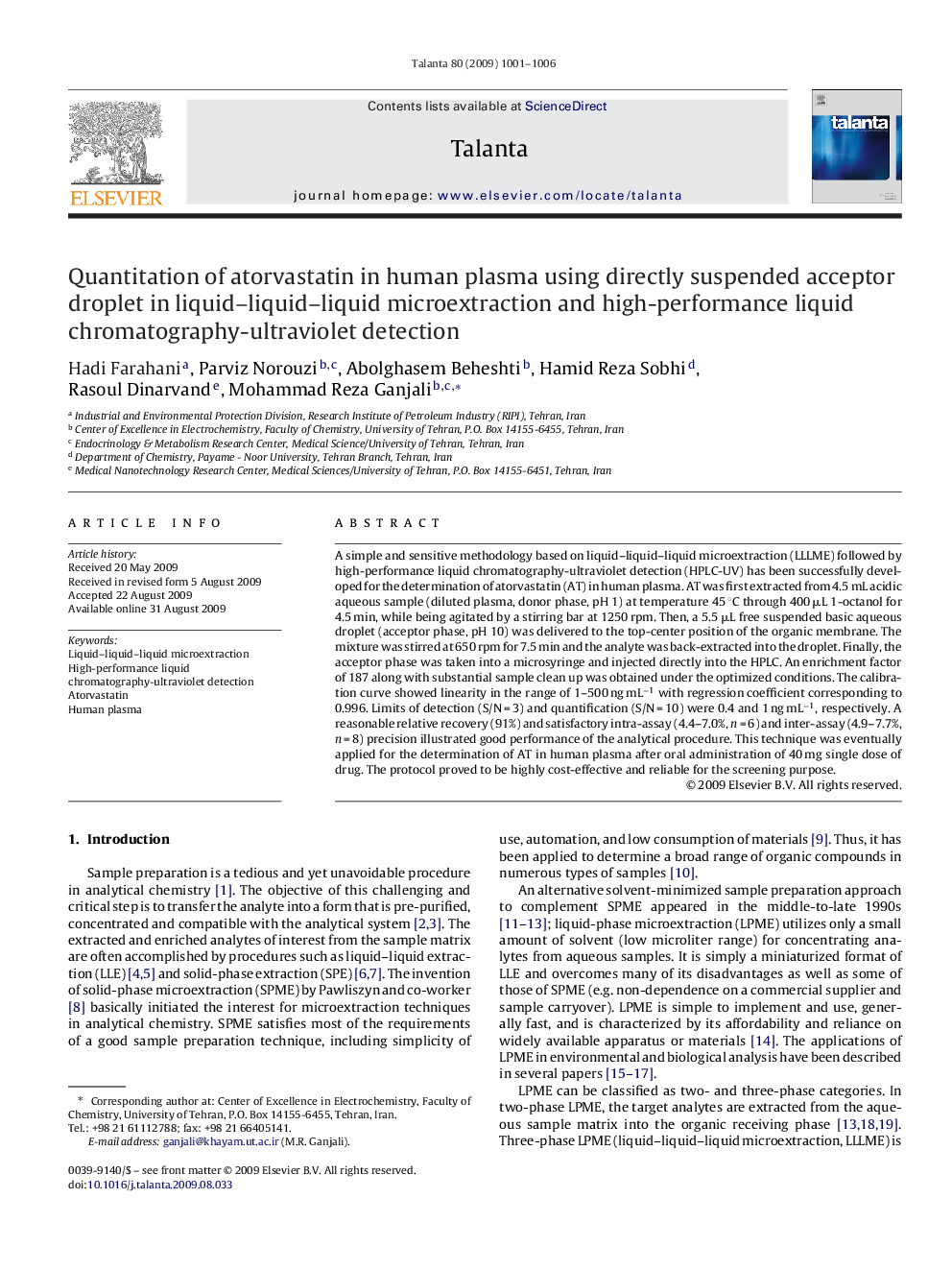| Article ID | Journal | Published Year | Pages | File Type |
|---|---|---|---|---|
| 1246795 | Talanta | 2009 | 6 Pages |
A simple and sensitive methodology based on liquid–liquid–liquid microextraction (LLLME) followed by high-performance liquid chromatography-ultraviolet detection (HPLC-UV) has been successfully developed for the determination of atorvastatin (AT) in human plasma. AT was first extracted from 4.5 mL acidic aqueous sample (diluted plasma, donor phase, pH 1) at temperature 45 °C through 400 μL 1-octanol for 4.5 min, while being agitated by a stirring bar at 1250 rpm. Then, a 5.5 μL free suspended basic aqueous droplet (acceptor phase, pH 10) was delivered to the top-center position of the organic membrane. The mixture was stirred at 650 rpm for 7.5 min and the analyte was back-extracted into the droplet. Finally, the acceptor phase was taken into a microsyringe and injected directly into the HPLC. An enrichment factor of 187 along with substantial sample clean up was obtained under the optimized conditions. The calibration curve showed linearity in the range of 1–500 ng mL−1 with regression coefficient corresponding to 0.996. Limits of detection (S/N = 3) and quantification (S/N = 10) were 0.4 and 1 ng mL−1, respectively. A reasonable relative recovery (91%) and satisfactory intra-assay (4.4–7.0%, n = 6) and inter-assay (4.9–7.7%, n = 8) precision illustrated good performance of the analytical procedure. This technique was eventually applied for the determination of AT in human plasma after oral administration of 40 mg single dose of drug. The protocol proved to be highly cost-effective and reliable for the screening purpose.
